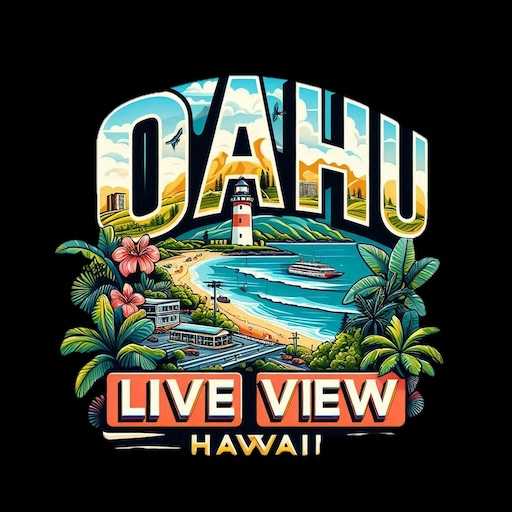Waimanalo, Oahu Webcams
Waimanalo FAA Webcam
Waimānalo: A Journey Through Oahu’s Historical Heart and Natural Splendor
Waimanalo, Oahu Webcams. Tucked against the base of the Koʻolau Mountains on the windward side of Oahu, Waimānalo is a picturesque town with a profound historical and cultural legacy. Known for its stunning beaches, agricultural roots, and Hawaiian cultural significance, Waimānalo is a place where Oahu’s rich history and natural beauty intertwine.
A Land of Abundance in Ancient Hawaii
The name “Waimānalo” translates to “potable water” or “fresh water seen” in Hawaiian, reflecting the abundance of freshwater springs in the area. In ancient times, Waimānalo was prized for its fertile lands and resources, which supported thriving Hawaiian communities. The lush plains and access to both mountain and ocean resources made Waimānalo a hub for traditional Hawaiian agriculture and fishing.
Early Hawaiians in Waimānalo developed advanced farming techniques, including terraced lo‘i kalo (taro fields) and kauhale (homesteads) designed to harmonize with the environment. These systems sustained tight-knit communities and supported a culture deeply rooted in the land. The ocean also played a significant role in the daily lives of Waimānalo residents, providing fish, seaweed, and other marine resources.
The spiritual connection to the land and sea is evident in the numerous heiau (temples) and sacred sites that remain in the area. These sites served as places of worship, ceremony, and tribute to Hawaiian gods and ancestors. Waimānalo’s deep ties to Hawaiian culture continue to inspire its modern identity.
The Arrival of Western Influence
In 1778, Western contact altered the trajectory of Waimānalo’s history. The arrival of Captain James Cook and subsequent explorers introduced new goods, technologies, and practices that began to reshape Hawaiian society. Over the 19th century, the traditional Hawaiian lifestyle around Waimānalo gradually shifted due to the influence of missionaries, traders, and settlers.
By the mid-1800s, the Great Mahele (land division) privatized land ownership in Hawaii, dramatically altering the social and economic fabric of the islands. Much of the land in Waimānalo was repurposed for agricultural production, particularly sugarcane plantations. The fertile lands, combined with consistent trade winds, made Waimānalo a prime location for plantation crops, and the area became home to immigrant laborers from China, Japan, Portugal, and the Philippines.
The plantation era brought economic growth but also significant changes to the local environment and way of life. Hawaiian subsistence farming and aquaculture systems were replaced with monocrop agriculture, leading to the decline of traditional practices.
Waimānalo’s Military Legacy
In the early 20th century, Waimānalo became significant for its role in U.S. military operations. The nearby Bellows Air Force Station, originally established in the 1910s, grew into an important training and operational base during World War II. Bellows played a pivotal role in the Pacific Theater, serving as a launch and training site for military personnel.
The military presence transformed parts of Waimānalo, with facilities and infrastructure altering the natural landscape. While Bellows is still in use as a military reservation, much of the land is now accessible to the public for recreational purposes, including camping and beach access.
Preserving Hawaiian Culture Through the Homestead Program
In 1921, the Hawaiian Homes Commission Act was enacted, setting aside land for Native Hawaiians to promote cultural preservation and economic self-sufficiency. Waimānalo became one of the first areas designated for Hawaiian homesteads, offering land leases to Native Hawaiians who met eligibility requirements.
The homestead program had a profound impact on Waimānalo, fostering a sense of community and cultural revitalization. It provided an opportunity for Native Hawaiians to reconnect with their ancestral lands and traditions. Waimānalo homesteads remain a cornerstone of the area’s identity today, serving as a living symbol of resilience and cultural pride.
Modern Waimānalo: A Balance of Tradition and Progress
Despite its development over the years, Waimānalo retains much of its rural charm and cultural heritage. The town is famous for Waimānalo Beach, often cited as one of the most beautiful beaches in Hawaii. With its powdery white sand, crystal-clear waters, and a backdrop of verdant mountains, Waimānalo Beach embodies the natural splendor that draws visitors and locals alike.
In addition to its natural attractions, Waimānalo has a vibrant community that celebrates Hawaiian culture. Local farms and markets offer fresh produce, flowers, and goods, many of which draw upon traditional agricultural practices. The annual Waimānalo Country Fair and other cultural events highlight the town’s unique blend of Hawaiian and plantation-era traditions.
While tourism has brought economic benefits to the region, it has also prompted discussions about sustainability and preserving the character of Waimānalo. Community efforts to protect sacred sites, such as the ancient heiau, underscore the importance of balancing progress with cultural and environmental stewardship.
Waimānalo in Hawaiian Identity
For many Hawaiians, Waimānalo is more than just a town; it is a symbol of connection to heritage, resilience, and the enduring spirit of aloha. From its ancient agricultural roots to its contributions during the plantation era and its pivotal role in cultural preservation, Waimānalo has helped shape Hawaii’s history and identity.
As one of the last rural communities on Oahu, Waimānalo stands as a reminder of the islands’ rich past and the need to safeguard that legacy for future generations. Whether gazing out at the turquoise expanse of Waimānalo Beach or walking through the verdant homesteads, one cannot help but feel the deep connection between the land, its people, and their stories.
For more information, visit the official Oahu website.
